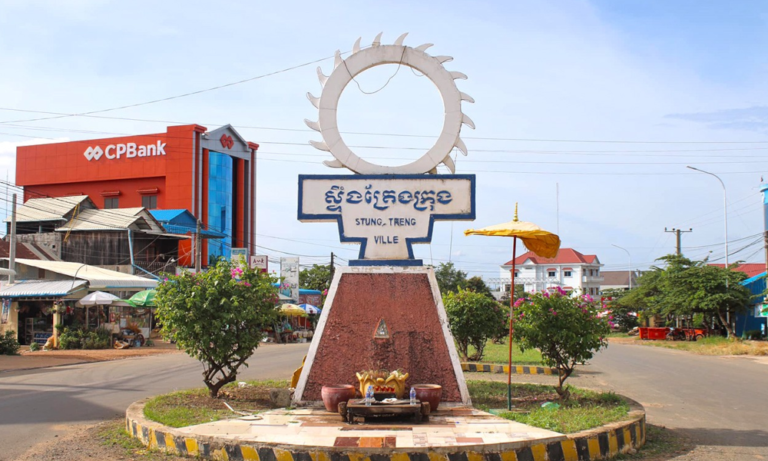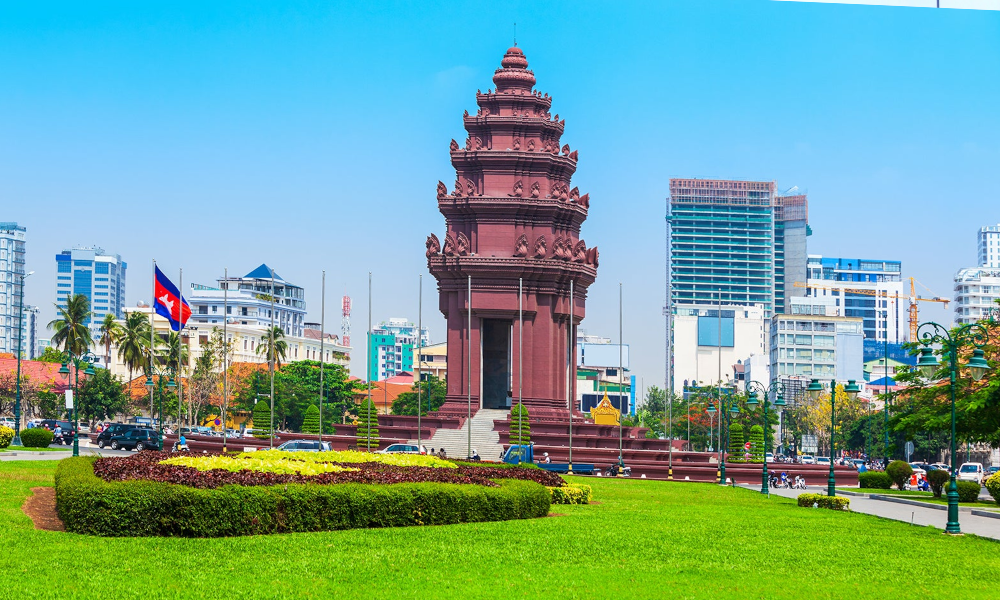Stung Treng Province: The Almighty Mekong River

Stung Treng is located in the northern part of Cambodia. It used to be known as Xieng Teng and has a rich history, having been part of the expansive Khmer Empire, followed by the Lao Kingdom of Lan Xang, and later the Lao Kingdom of Champassack. During the era of French Indochina, it was returned to Cambodia.
General Information of Stung Treng
Stung Treng, the provincial capital, serves as a vital trade center and showcases a touch of Lao influence, given its proximity to the Lao border, which is about 50 km away. This charming and tranquil town is nestled at the meeting point of the San River and the Mekong River. The San River flows alongside the town, while the impressive Mekong River graces the northeastern edge.
Locals refer to the San River by three different names, depending on who you ask. Some call it the Kong River, as the San and Kong Rivers converge roughly 10 km northeast of Stung Treng, leading to some confusion over its proper name. Others prefer the name Sekong River, which reflects the combination of these two waterways. Regardless of the name, this river town is one of Cambodia’s picturesque gems, perfect for relaxing if you’re exploring the Northeast River Scene on your way to Laos.
In Stung Treng, a lovely paved road runs along the San River, becoming a hub of social activity in the late afternoon and evening. Locals enjoy cruising along, taking in the scenery and each other’s company. Drink and dessert vendors set up shop to cater to the lively crowd. It’s an ideal location for a stroll or jog at any time, as the river road transitions into a pleasant rural path leading to the airport, just 4 km north of the town.
Geography Of Stung Treng
Stung Treng province, spanning 11,092 square kilometers, is a remote and lightly populated area located in the northeast of Cambodia. It shares borders with Laos to the north, Ratanakiri to the east, Preah Vihear to the west, and Kratie and Kompong Thom to the south. The province is organized into five districts, 34 communes, and 128 villages.
What sets Stung Treng apart from other provinces in the Mekong basin is its unique charm. The landscape is characterized by vast forests, winding rivers, and a low population density. Additionally, it encompasses the western part of the expansive Virachey National Park, which can be reached from the picturesque town of Siem Pang, situated along the Tonle Kong. The province is also home to three major rivers: the Tonle Kong, the Tonle San, and the mighty Mekong, which is dotted with numerous small islands throughout its stretch in Stung Treng Province.
Population
The population of Stung Treng makes up only 0.7% of Cambodia’s total population. With a density of just 7 people per square kilometer, it is significantly lower than the national average. Due to its low population and rich natural resources, the area experiences a high rate of immigration. According to the 1998 population census, 19.4% of residents were born outside the province, with males making up 55% of these migrants. The primary reasons for moving were family relocation and the pursuit of better job opportunities.
Like many other provinces, Stung Treng has a higher number of females than males. The 1998 census revealed that females represented 50.5% of the population. Approximately 79.4% of the residents work in agriculture, while the secondary and tertiary sectors contribute 2.4% and 18.2%, respectively. The total population consists of 54,488 males and 55,217 females, bringing the overall count to 109,705 individuals.
Economy
Stung Treng’s economy primarily revolves around fishing and silk weaving, with a smaller contribution from agricultural farming.
It is hoped that the Ministry of Tourism will effectively implement its newly established development plan. Central to this initiative is the conservation of the last remaining Irrawaddy river dolphins in the Mekong River, which aims to alleviate poverty and attract a significant number of tourists to the area. The Mekong River Discovery Trail Project is designed to entice visitors to witness these endangered freshwater dolphins, which inhabit ten deep-water natural pools along a 190-km stretch of the river, mainly situated between the tranquil provincial capitals of Kratie and Stung Treng.
Transportation to Stung Treng
Shared taxis operate on two routes from Stung Treng: one heading to Banlung (Rattanakiri) and the other going south to Kratie. If you’re traveling to Banlung, it’s wise to pack some food, water, and mosquito repellent. Breakdowns can happen on the rough laterite roads, and you might find yourself stuck in the jungle overnight. While shared taxis typically travel in groups for safety, they can fill up quickly, leaving some passengers stranded outdoors. The journey to Banlung usually takes five hours but can extend to seven during the rainy season, with fares ranging from $8 to $10 for a taxi and $5 to $7 if you choose to ride in the back of a pickup. For the trip to Kratie, expect to pay around 20,000 riel.
Taxi, Bus or Vans
Numerous bus companies, including Giant Ibis, Mekong Express, PSD Xpress, Sorya Bus, Neak Krohorm, Thero Express (15-seat), Larryta, KSO, Virak Buntham, and Cambodia Post VIP Van, provide transportation services to Stung Treng. These companies operate modern, air-conditioned buses and vans, with departures scheduled every 15 minutes to one hour from 6 AM to midnight. The fares are quite reasonable, and online bus tickets can be purchased in advance.
Check available flight below:
Things to see & Do in Stung Treng
Where to Stay in Stung Treng (Suggestion)
Check available Hotel below:
Tours of Stung Treng
Phnom Penh Private Tour: 1 Day Tour
Explore the vibrant city of Phnom Penh with a private tour that allows you to customize your itinerary based on your interests. Experience the rich culture, history, and beauty of Cambodia with a personalized guided tour.




There are no reviews yet.